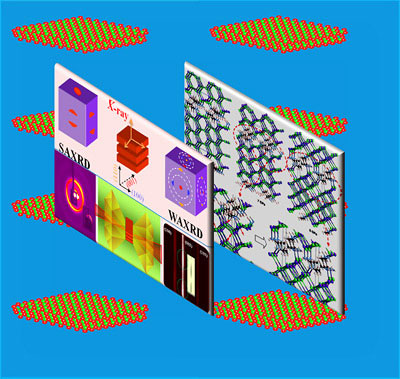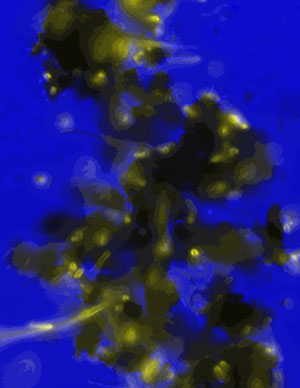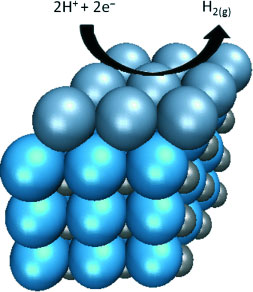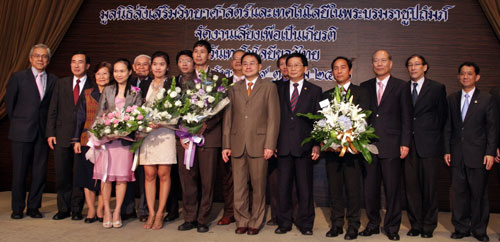In the current issue of the journal Nature Reviews Microbiology, researcher Cheryl Nickerson and her team at the Biodesign Institute at Arizona State University highlight an innovative approach for studying cells in 3-D.
Oct 21st, 2010
Read more
Just as landscape photographs shot in low-angle light dramatically accentuate subtle swales and mounds, depositing metal vapors at glancing angles turns a rough surface into amazing nanostructures with a vast range of potential properties.
Oct 21st, 2010
Read more
 By understanding the process behind the transformation itself, from both experimental and theoretical perspectives, researchers have taken a potential step toward creating a new class of exceptionally strong, durable materials that maintain their high-pressure properties -- including strength and superconductivity -- in everyday low-pressure environments.
By understanding the process behind the transformation itself, from both experimental and theoretical perspectives, researchers have taken a potential step toward creating a new class of exceptionally strong, durable materials that maintain their high-pressure properties -- including strength and superconductivity -- in everyday low-pressure environments.
Oct 20th, 2010
Read more
 Scientists with the Lawrence Berkeley National Laboratory (Berkeley Lab) have designed an electrical link to living cells engineered to shuttle electrons across a cell's membrane to an external acceptor along a well-defined path. This direct channel could yield cells that can read and respond to electronic signals, electronics capable of self-replication and repair, or efficiently transfer sunlight into electricity.
Scientists with the Lawrence Berkeley National Laboratory (Berkeley Lab) have designed an electrical link to living cells engineered to shuttle electrons across a cell's membrane to an external acceptor along a well-defined path. This direct channel could yield cells that can read and respond to electronic signals, electronics capable of self-replication and repair, or efficiently transfer sunlight into electricity.
Oct 20th, 2010
Read more
Ein Team um den LMU-Biophysiker Professor Dieter Braun und Wissenschaftler des LMU Spin-off NanoTemper Technologies GmbH haben eine Methode entwickelt, die erstmals die Interaktionen biologischer Molekuele aller und auch sehr unterschiedlicher Groessen untersuchen laesst - selbst der bislang nur schwer zu erforschenden Small Molecules.
Oct 20th, 2010
Read more
Researchers at CEA, Joseph Fourier University and CNRS have developed a new approach combining protein crystallography and biomimetic chemistry for observing they key steps of a process essential to life: oxygen activation. This was achieved by creating a complex artificial metalloenzyme composed of a chemical catalyst and a protein and observing it via X-ray crystallography at the European Synchrotron Radiation Facility (ESRF).
Oct 20th, 2010
Read more
One of the highest resolution electron-beam lithography systems in Europe will soon be helping scientists in Yorkshire break new ground in nanotechnology.
Oct 20th, 2010
Read more
UK scientists help to create standards for measuring electric materials on the nanoscale.
Oct 20th, 2010
Read more
The King Abdullah Institute for Nanotechnology (KAIN) will be equipped with state-of-the-art laboratories and facilities constructed over an area of 8,000 square meters.
Oct 20th, 2010
Read more
A groundbreaking new equation developed in part by researchers at the University of Michigan could do for organic semiconductors what the Shockley ideal diode equation did for inorganic semiconductors: help to enable their wider adoption. Without the Shockley equation, the computers of today would not be possible.
Oct 20th, 2010
Read more
Chinese researchers have described a new breakthrough in understanding the way electrons travel around quantum dots. This might lead to promising new fabrication methods of novel quantum devices.
Oct 20th, 2010
Read more
Canary Foundation researchers at Stanford University received the National Cancer Institute (NCI) Early Detection Research Network (EDRN) Biomarker Development Laboratory (BDL) Grant. This award came at the same time as the U.S. Food and Drug Administration (FDA) approved an eIND for Canary Foundation research in the testing of molecular imaging agents for lung cancer.
Oct 20th, 2010
Read more
In the framework of the ongoing work of the High-Level Expert Group on Key Enabling Technologies (KETs), this Open Day is organised by the Working Group on Nanotechnologies in order to consult a broad stakeholder audience on the needs and challenges of the sector, contributing to the development of appropriate policy measures to promote the industrial deployment of KETs.
Oct 20th, 2010
Read more
 Monolayer of platinum atoms on a tungsten carbide support catalyzes the electrolytic production of hydrogen effectively and cheaply.
Monolayer of platinum atoms on a tungsten carbide support catalyzes the electrolytic production of hydrogen effectively and cheaply.
Oct 20th, 2010
Read more
Plants play an important role as producers of sugar and carbohydrates. Scientists from the University of Wuerzburg are conducting research in this area - with the long-term goal of influencing sugar levels in agricultural crop plants.
Oct 20th, 2010
Read more
 Four recipients received the 2010 Technologist Award in Bangkok.
Four recipients received the 2010 Technologist Award in Bangkok.
Oct 20th, 2010
Read more





 Subscribe to our Nanotechnology News feed
Subscribe to our Nanotechnology News feed